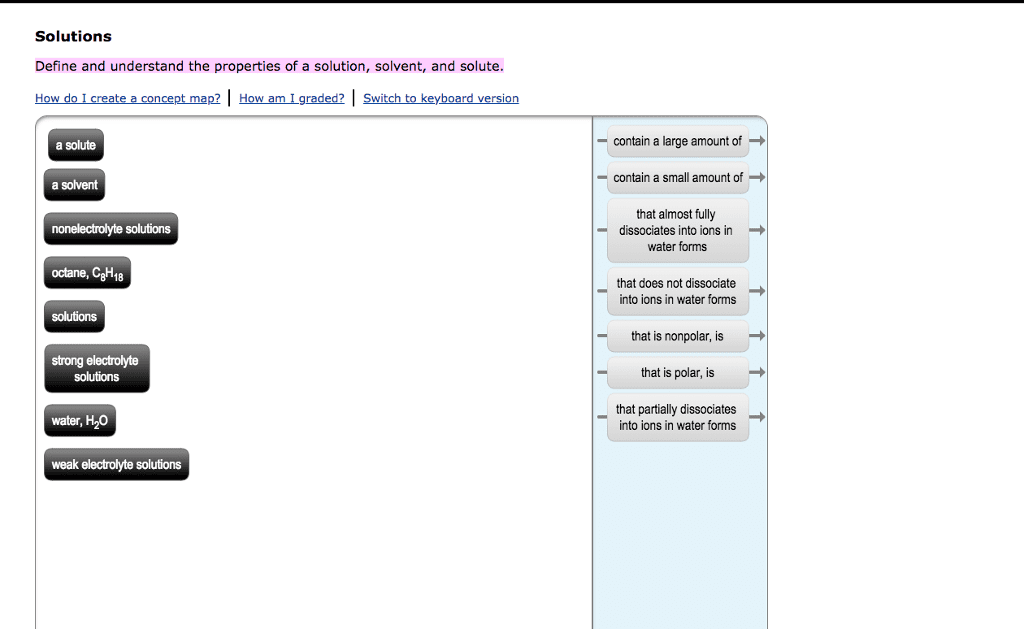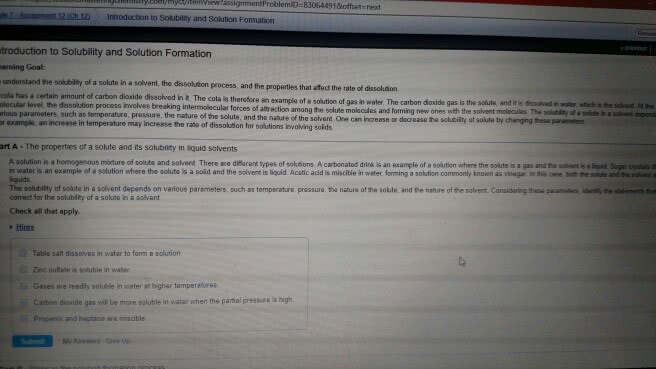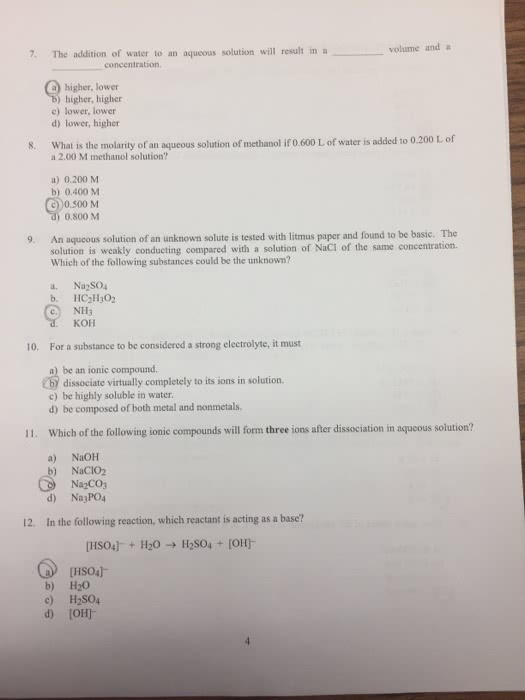CHM 151 Lecture Notes - Lecture 4: Volumetric Flask, Boron, Oxidation State
Document Summary
Chapter 4 reactions in aqueous solution: solutions are defined as homogeneous mixtures of two or more pure substances. Solid solution, alloy; gas solution, air; liquid solution, wine, vinegar; Solvent: present in greatest abundance, is the dissolving medium of a solution. Solute: all other substances that are dissolved in a solvent to form a solution. A solution in which water (h2o) is the solvent is called an aqueous solution. Water is a polar molecule contains separation of partial + and charges. Water can dissolve ionic compounds and covalent compounds with polar groups (nh, oh) Nonpolar compounds (benzene, oil, fat, methane) do not dissolve in water. Soluble ionic compounds dissociate into their ions in solution. Dissolution is the process by which a solute (solid, liquid or gas) form a solution in a solvent. Electrolyte: a substance that dissociates into ions when dissolved in water. Strong electrolyte dissociates completely when dissolved in water. Weak electrolyte only dissociates partially when dissolved in water.




